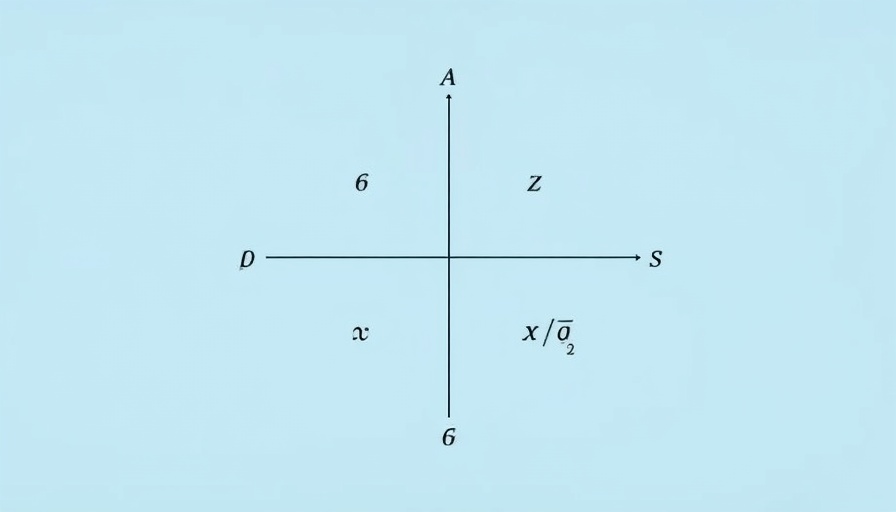
The Power of Orthants in High-Dimensional Data Analysis
In the realm of data analysis, especially within artificial intelligence and machine learning, understanding how to classify high-dimensional data into orthants plays a crucial role. An orthant is essentially the generalization of a quadrant in higher dimensions — it's how we make sense of vast sets of numerical information.
What is an Orthant?
When dealing with multidimensional data, the concept of an orthant allows data scientists and AI researchers to categorize points based on the signs of their coordinates. Much like a 2-D system consists of four quadrants, a d-dimensional space is divided into 2^d orthants. These can be classified naturally using binary systems, making it easier to analyze vast datasets.
Understanding the Unique Classification System
The labeling of these orthants can be established using a binary representation of signs. In 2-D space, we typically use signs '+' and '-' to classify into quadrants. For instance, the first quadrant has a positive sign for both coordinates ('++'), which can be denoted as '11' in binary, ultimately translating to a numerical label of 4 in traditional counting. By extending this method into higher dimensions, a mapping is created — 3-dimensional spaces yielding 8 unique octants akin to the quadrants.
Why Does Orthant Classification Matter?
As data sets grow increasingly complex, the ability to identify which orthant a point lies in becomes essential in fields like AI learning, machine learning, and analytics. With AI-driven insights derived from multi-dimensional data, understanding orthants helps in distinguishing different data behaviors, enhancing model accuracy, and optimizing learning paths. Essentially, it enhances the effectiveness of algorithms.
Parallel Examples in Recent Studies
For example, a study examining the impact of different variables on AI learning paths illustrated how data points clustered in certain orthants showed specific behavioral patterns, leading to more refined strategies for AI training. This results in improved decision-making processes, allowing businesses to predict trends more accurately based on these clustering insights.
The Future of Orthant Analysis in AI Technology
Looking forward, we can anticipate an increased reliance on orthant classification as AI technology advances further. The ramifications of utilizing high-dimensional data are enormous, influencing sectors like finance, healthcare, and marketing. Organizations will adapt their strategies by incorporating these quantitative insights, ultimately optimizing performance and innovation.
Common Misconceptions About Orthants
There exists a misconception that orthant systems are overly complex and only applicable at advanced levels of data analysis. In reality, once the basic concepts of signs and their representations are understood, orthant classification becomes an intuitive tool for those engaging with data at all levels. Emphasizing the accessibility of this knowledge is vital for demystifying the power of multidimensional data analysis.
Conclusion: Harnessing the Orthant-AI Connection
To sum up, the ability to classify high-dimensional data points into orthants is not only a theoretical exercise but a practical necessity in AI learning today. Understanding how to leverage this knowledge can significantly enhance the effectiveness of AI models and the insights they provide.
Are you ready to take your understanding of AI science to the next level? Dive deeper into the methodologies that can transform data into powerful strategic tools for your business or personal projects. With the right insights, you can effectively navigate the evolving landscape of artificial intelligence.
 Add Row
Add Row  Add
Add 




Write A Comment